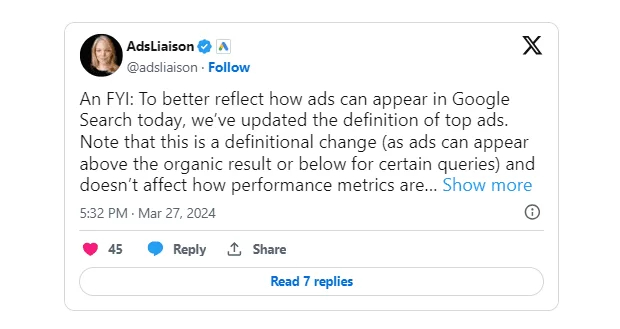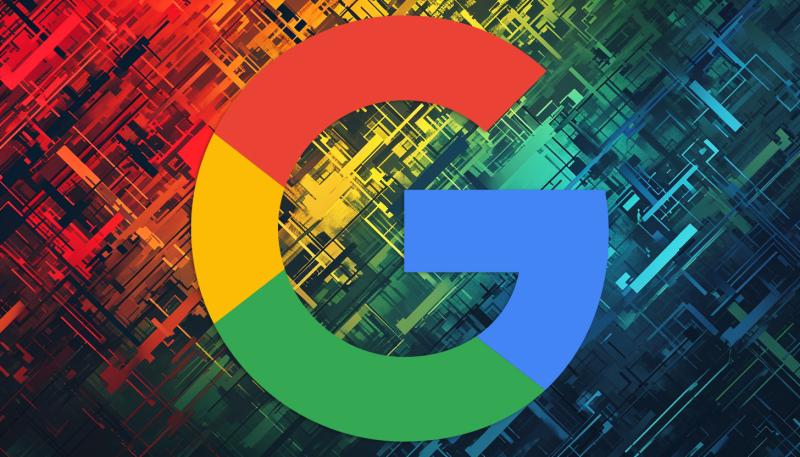Google has altered its definition of top ads in the search results. In an announcement on X (formerly Twitter), Ginny Marvin, acting as the Google Ads Liaison, made a public service announcement regarding this change.
“To better reflect how ads can appear in Google Search today, we’ve updated the definition of top ads.”

This update represents a change in definition and does not impact the calculation of performance metrics. The modified definition, as outlined in a Google Help Center page, now states:
“Top ads are adjacent to the top organic search results. Top ads are generally above the top organic results, although they may show below the top organic results on certain queries. Placement of top ads is dynamic and may change based on the user’s search.”
What are Google’s Top Ads
These are advertisements that appear prominently at the top of the search engine results page (SERP) in response to a user’s query. These ads typically appear above the organic search results and are often the first results that users see when searching. They are marked with an “Ad” or “Sponsor” label to distinguish them from organic search results. Google’s definition of top ads may evolve as the search engine refines its algorithms and features.
Google’s support page offers deeper insight into top and absolute top metrics, which serve as a set of prominence indicators providing advertisers with an understanding of their ads’ positioning on the page.
The two primary metrics are:
- Search top impression rate – “Impr. (Top) %”
- Search absolute top impression rate – “Impr. (Abs. Top) %”
Search top impression share (Search top IS) and Search absolute top impression share (Search abs. top IS) aid advertisers in comprehending the potential for their ads to attain visibility among top ads or secure the topmost position among them.
Unlike average position, these metrics do not compare the order of ads to each other but rather reflect the actual placement of ads on the SERPs.
How This Could Benefit You
As an advertiser, leveraging these metrics allows you to change your bids strategically to boost the proportion of your ads appearing either among top ads or securing the premier position within them. By closely monitoring your Search top impression share and Search absolute top impression share, you gain valuable insights to enhance your ad positioning and drive increased traffic to your website.
Furthermore, comprehending metrics associated with lost impression share due to budget constraints or Ad Rank shortcomings helps you to focus on the areas requiring refinement in your campaign management.
Fine-tuning your budget allocation and optimizing Ad Rank enhances your likelihood of featuring among the top ads, thereby elevating the overall performance of your campaigns.
How to Perform an On-Site SEO Audit: A Step-by-Step Guide
In Summary
Google’s revised definition of top ads now consists of the potential for ads to appear below the top organic results for specific queries. Top and absolute top metrics offer valuable insights into ad placement within search results, aiding advertisers in performance monitoring.
Advertisers can leverage these metrics to establish bid objectives, identify budget constraints, enhance Ad Rank, and conduct competitive assessments to refine their advertising strategies.
Would you like to read more about “What are Google’s Top Adss” related articles? If so, we invite you to take a look at our other tech topics before you leave!
Use our Internet marketing service to help you rank on the first page of SERP.










